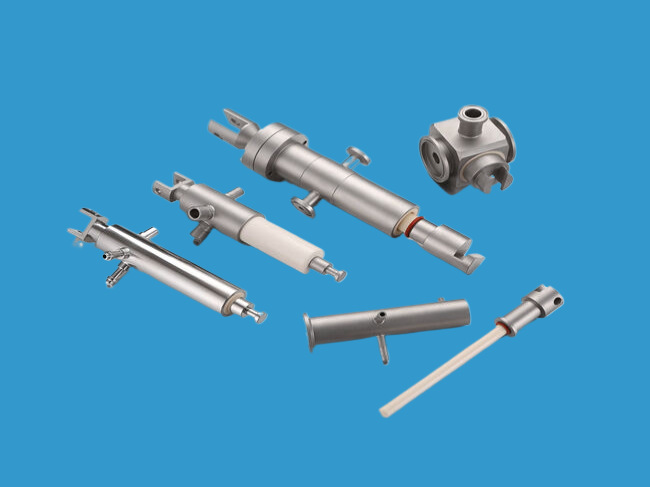How to connect ceramic plunger and ceramic plunger tube installation method
Ceramic plunger and stainless steel connection method
First, welding connection
Welding is the method by which two or more workpieces are fused together by heating or pressurizing. For the connection of ceramic plunger and stainless steel, ceramic plunger can be connected by TIG (tungsten inert gas welding) and Laser (laser) welding. This connection method has the advantages of high connection strength, beautiful connection part and so on. However, due to the high welding temperature, the thermal expansion coefficient of the ceramic plunger is different from that of stainless steel, which may lead to problems such as interface cracking.

Second, metal plug connection
A metal insert connection is a metal insert installed on one or more ends of a ceramic mandrel and inserted into a stainless steel insert to form a joint. This method is conducive to mass production and partial disassembly, and the connection effect is good. However, when the metal is inserted, if the plug end face or the inner diameter of the hole is poor, it will cause internal damage to the plug connection, and it is also easy to cause corrosion and other problems.
Third, adhesive and mechanical bayonet connection
This connection method uses chemical adhesives or pure mechanical bayonets to connect the ceramic plunger core column with the stainless steel insert. Among them, the chemical adhesive has the advantages of low cost and good adaptability. The mechanical bayonet has the advantages of better connection effect and higher temperature and pressure. However, if the ceramic plunger connection is not proper, there may be damage such as weak structure and cracks in the bonding site.

The above are several connection methods of ceramic plunger and stainless steel, these methods have advantages and disadvantages, need to choose the most suitable way according to different applications. When in use, attention should be paid to regular inspection of the connection to ensure the normal operation of the equipment.
Ceramic plunger tube installation method detailed
First, disassemble the old pipe
Remove the car engine intake manifold to facilitate the next work operation.
2. Remove the ceramic plunger tube of each cylinder in turn, and note the position and sequence of each component for faster subsequent installation.

Two, cleaning
1. Use special cleaning agents and tools to clean the inside of the waste ceramic tube to ensure that no impurities will be left, affecting the working effect of the new ceramic tube.
2. Use cleaning agent to clean the hydraulic motor cylinder to ensure that its surface is clean and no debris is left.
3. Apply grease
Apply a certain amount of lubricating oil or grease on the new three-cylinder ceramic plunger tube to ensure the normal operation of the new tube. At the same time, the oil can also reduce the flow resistance of the coolant in the tube and improve the working efficiency of the hydraulic motor.

Fourth, install the new pipe
1. Install the ceramic tube in turn, and a layer of sealant can be coated on the inside of the tube to ensure that the tube and the cylinder do not leak.
2. Tighten the bolts around the cylinder block and tighten the mounting screws of the ceramic tube in turn. Note that the screw should be tightened evenly to prevent excessive stress between the pipe and the cylinder, resulting in cracks and damage.
3. After installation, install the engine intake manifold back to the original position and install all parts.
In short, the installation process of the ceramic plunger tube requires attention to many details, and must be carefully operated to ensure that it works properly. I hope this article has been helpful.